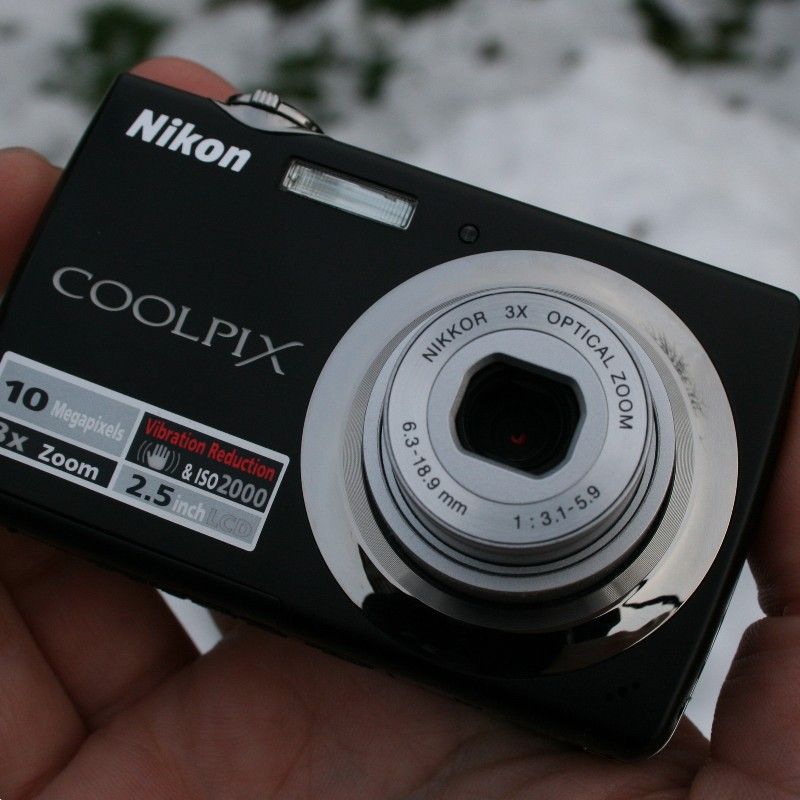If you don’t fancy the touchscreen interface of the S230, then the S220 is both more affordable and benefits from a longer battery life for losing the touchscreen on the back. But is this a compact camera worthy of consideration?
Our quick take
The battery life is better than the S230 sibling as you’d expect, giving you a cited 160 shots from a full charge, which we found to be around the right marker – it should give you enough to get through a typical wedding, for example.
It can leave you wanting more on the imaging front, but for those looking for an easy to use snapper, which is light and compact, then the S220 does come at an appealing price.

Nikon Coolpix S220 digital camera - 3.5 / 5
| FOR | AGAINST |
|---|---|
|
|
Compact in form, measuring only 89.5 x 55.5 x 18mm, it shaves a couple of millimetres off its thickness by featuring a standard 2.5-inch LCD display on the back. The result is a 10-megapixel camera that is pretty well loaded, but won’t weigh down your pocket. The metal body also feels solid and well constructed making this a camera you won’t be scared to show off.
The main controls lie to the right of the screen, with a central four-way controller and scene, playback, menu and delete buttons ranged around this controller. The layout is simple and clear, but probably better suited to those with smaller hands as you might find you hit the playback button when you grip the camera to take a shot.
The top of a camera sees the power button as well as the shutter and the normal zoom ring surrounding it. Power on and the 3x zoom (35 x 105mm equiv) lens drives out, giving you your first shot somewhere in between 2 and 3 seconds. The slightly recessed power button means there is no chance of the camera turning on whilst it is in your pocket or bag.
The four-way controller gives you shortcuts to self-timer, flash, exposure compensation and macro modes, whilst the real meat of the options lies split between the menu and the scenes. The scene button opens up the range of preset scene options, which are worth getting to know because they do hold the key to getting some more tricky shots, whilst keeping the eager auto mode under control.
The problem arises that the auto mode would seem to bump the ISO up, rather than fire the flash on some occasions, so what is a fairly typical indoor scene, turns into a very noisy image. It is worth knowing that "auto" doesn’t in fact limit all your controls, and you can jump into the menu and make some changes – such as setting the ISO and white balance – which can make quite a difference.
If you are looking for smile shot you’ll also find it here, coupled with a blink proof setting that takes two shots to avoid the problem of someone closing their eyes at the key moment. It does mean that you need a steady hand and to concentrate on what you are doing – all this technology won’t make you a better photographer, but it might help avoid some common annoyances.
There is also a vibration reduction setting that indicates on-screen if you are moving around. Distortion from the lens is neatly negated thanks to an anti-distortion setting. You do get some in-camera editing modes too, but not to the same extent as the S230 with its included stylus, so you can do a quick fix, but you need to be trusting as you can’t really see what is being changed. But if you lack image editing software on your computer then it gives you the chance to choose between the original and retouched images once back at home.
Image quality, as you’d expect, is very similar to the S230, both cameras being based around the same hardware and technologies. As mentioned the auto ISO system does get a little unwieldy throwing up the ISO and giving you a noisy image, when a little flash would have been a better option. The scene selections will help pick out the main controls and give you a better result overall once you know what does what.
But there is a tendency of over-expose and the S220 does struggle with bright and high-contrast scenes, with plenty of pixel blowout and purple fringing where you might not expect it. Equally, images are rather soft, the camera not really getting a grip on detail unless things are absolutely perfect. For general web use, or for those who like to print 6 x 4in album prints, this might not be a problem, but if you are seeking large prints then you might want to look elsewhere.
With only 44MB internal memory, you’ll be reliant on slotting an SD/SDHC card (not supplied) into the bottom, in the same compartment as the battery. This lies adjacent to the proprietary connection so you can connect to your PC and download your images.
To recap
It can leave you wanting more on the imaging front, but for those looking for an easy to use snapper, which is light and compact, then the S220 does come at an appealing price
